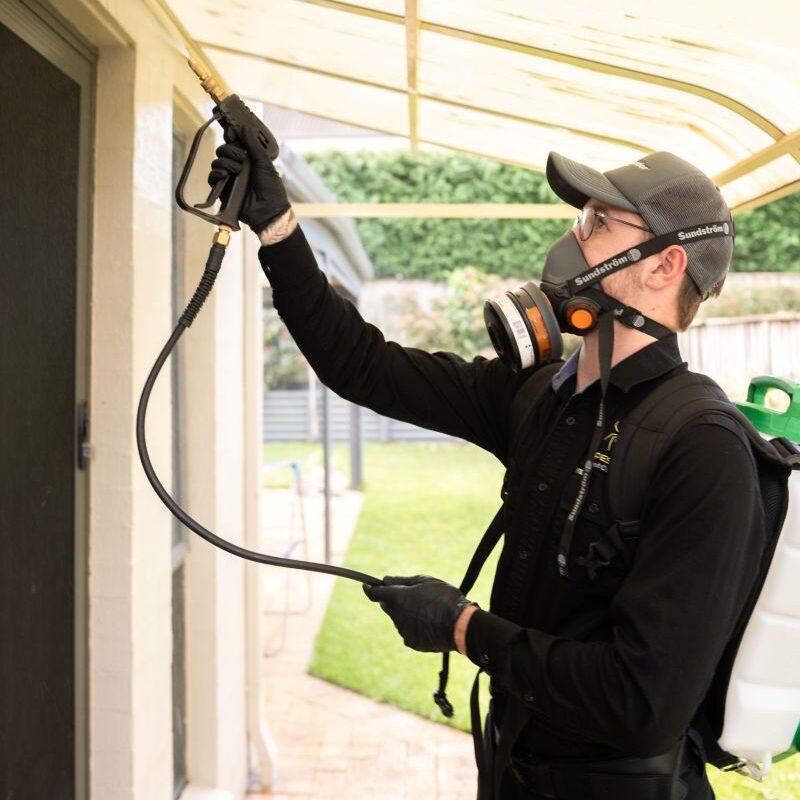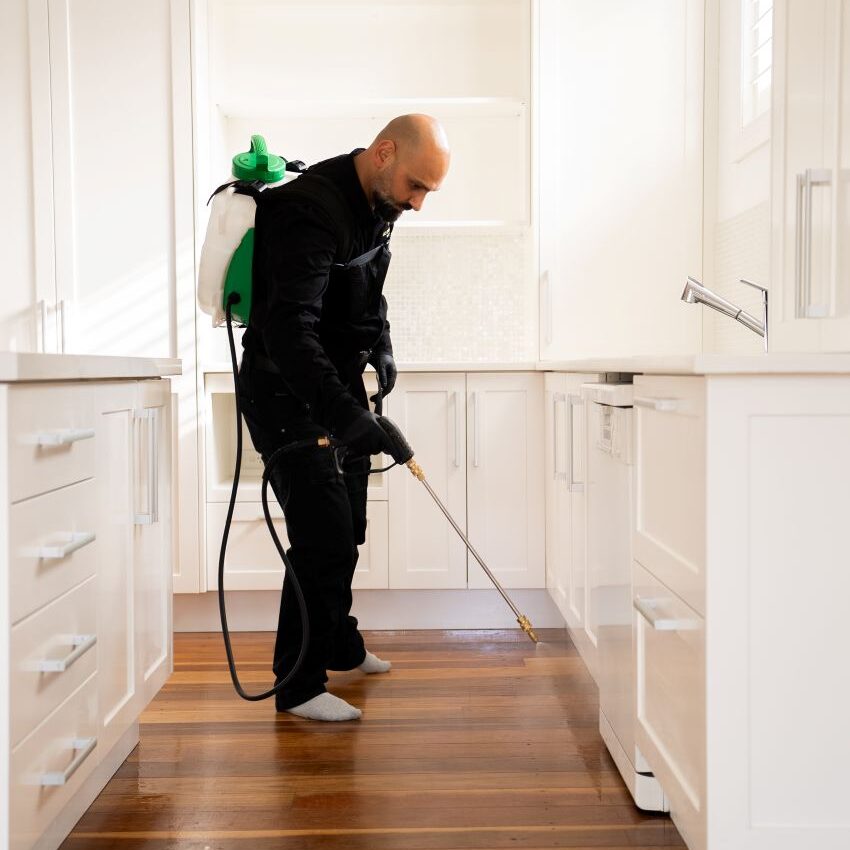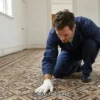For many years, roof dusting was considered a primary technique in general pest control methods utilized in homes throughout Sydney. This approach was widely regarded as the most effective means of eliminating cockroaches, spiders, and various other insects that often found refuge in the cavities above ceilings. However, as time has advanced, both pest control professionals and safety regulators have become increasingly aware of the potential hazards associated with this method, particularly in modern homes that are well-sealed and insulated. Consequently, roof dusting is now deemed less suitable for contemporary pest management practices.
At So Pest Off, we have embraced a more intelligent, secure, and effective approach to pest control. In this article, we will delve into the reasons why roof dusting is no longer a standard practice in most pest management strategies and will outline specific scenarios where it might still prove beneficial.

Exploring Roof Dusting: A Closer Look at This Pest Control Technique
Roof dusting entails the application of a fine insecticidal powder, most commonly permethrin dust, directly into the roof cavity of a residence. The primary objective is for this dust to settle on various surfaces within the cavity, effectively targeting pests such as cockroaches, ants, and spiders that may be hiding in the ceiling void. In older homes that featured open ceiling gaps and limited insulation, roof dusting was highly effective. However, with the advent of modern construction techniques that incorporate insulation batts, ducted air conditioning, and downlights, this method has become significantly less safe and less essential in today’s pest control landscape.
Assessing the Risks: Understanding Why General Roof Dusting Is Discouraged
Despite its historical effectiveness, permethrin dust is not universally safe for indoor applications. Below is a comprehensive analysis of the reasons why:
1. What Are the Risks of Dust Escaping from the Roof into Living Spaces?
When dust is applied within a roof cavity, there is no assurance it will remain confined to that space. Fine particles can easily drift through downlights, air-conditioning vents, exhaust fans, and ceiling cracks, ultimately settling in bedrooms and other living areas. This situation raises significant concerns, especially for families with children, individuals suffering from asthma, or those with allergies. These airborne particles pose a health risk as they can be inhaled or settle on furniture and surfaces, potentially leading to a variety of health complications.
2. Why Do Roof Cavities Accumulate Various Contaminants?
Ceiling voids often harbor a multitude of contaminants, including old insulation fibres, dust, bird droppings, and rodent waste. When a pest control technician applies dust, these materials can become airborne and circulate throughout your home via ventilation systems and ceiling openings. For example, when you activate your air conditioning after a roof dusting treatment, the airflow can propel these disturbed particles into your living spaces, further jeopardizing your indoor environment.
3. How Effective Is Roof Dusting Against Specific Targeted Pests?
In modern homes, many common pests such as cockroaches and ants typically do not inhabit roof cavities. Instead, they prefer nesting in wall cavities, kitchens, and subfloor areas, which can be accessed more effectively through methods like external wall dusting or baiting. As a result, roof dusting often introduces unnecessary risks without significantly enhancing pest control outcomes.

Introducing Our Innovative and Safer Pest Control Methodology
At So Pest Off, we have redefined our approach to pest control to prioritize your family’s health and home safety. Instead of introducing dust directly into the roof cavity, we utilize a targeted external application method that is both efficient and safe.
- We dust through weep holes and wall cavities, focusing precisely on areas where cockroaches, ants, and spiders are known to reside.
- We integrate dusting with gel baiting and barrier sprays, effectively eliminating pests at all life stages.
- We significantly reduce airborne dust exposure, thus protecting your air quality and overall home environment.
This innovative methodology not only maintains cleaner living spaces but also achieves superior pest control results because it specifically targets pests in their actual habitats, rather than where they may occasionally appear.
Identifying Scenarios Where Roof Dusting May Still Be Applicable
There are a few exceptional situations where roof dusting remains the most appropriate pest control option. These scenarios are rare and managed with strict safety protocols:
- Severe infestations: This includes significant populations of cockroaches or bird mites that follow a nesting infestation.
- No wall access points: In certain older properties, wall cavities may not be accessible from the exterior.
- Minimal ceiling penetrations: If the ceiling lacks vents, downlights, or fans, the likelihood of dust entering the home is considerably lower.
In these specific circumstances, our technicians may perform a controlled roof dusting treatment, employing protective gear and applying only the minimum effective amount of dust. We will always communicate the entire process and safety measures with you beforehand, ensuring complete transparency throughout.
Strategies to Maintain Your Home’s Air Quality and Safety
Roof dusting extends beyond mere pest control; it significantly influences indoor air safety. When your ceiling cavity is disturbed, fine dust and insecticidal particles can infiltrate your air conditioning system or descend through vents. Over time, these particles can disperse through ducts, settle on furniture, and even contaminate the air you breathe.
By avoiding unnecessary roof dusting, we actively safeguard your air quality while still delivering effective pest control solutions that prioritize your family’s health and well-being.

Establishing a New Standard for Pest Control Practices in Sydney
So Pest Off’s strategies align with the guidelines established by the Australian Environmental Pest Managers Association (AEPMA), emphasizing low-toxicity, targeted pest management techniques. We employ:
- Precision dusting through weep holes, ensuring focused and effective application.
- Gel baiting specifically formulated for cockroaches and ants, maximizing effectiveness and efficiency.
- Surface sprays for external barriers, providing comprehensive protection against pest invasions.
This integrated approach guarantees long-lasting protection without compromising your family’s safety or comfort, ensuring that you and your loved ones enjoy a healthier living environment.
Key Takeaways on Roof Dusting and Modern Pest Control Approaches
While roof dusting may have been standard practice in pest control methods of the past, our understanding has evolved significantly. Modern pest control prioritizes safety, precision, and targeting pests where they are most likely to be found, instead of inundating your home with harmful chemicals.
At So Pest Off, we only resort to roof dusting when absolutely essential and always under controlled conditions. For the majority of residences, external wall dusting and barrier treatments provide superior protection with substantially lower risk levels involved.
If you are uncertain whether your property requires roof dusting, our licensed technicians are ready to conduct a thorough inspection and provide tailored recommendations for the safest and most effective pest control solutions to meet your specific needs.
Contact us today to schedule an inspection or inquire about our comprehensive pest control packages designed for homes and businesses in Sydney.
The Article: Roof Dusting Pest Control: Understanding Its Infrequency first appeared on https://writebuff.com
The Article Roof Dusting Pest Control: Why It’s Rarely Needed Was Found On https://limitsofstrategy.com
The Article Roof Dusting Pest Control: The Uncommon Necessity Explained First Appeared ON
: https://ad4sc.com










No responses yet